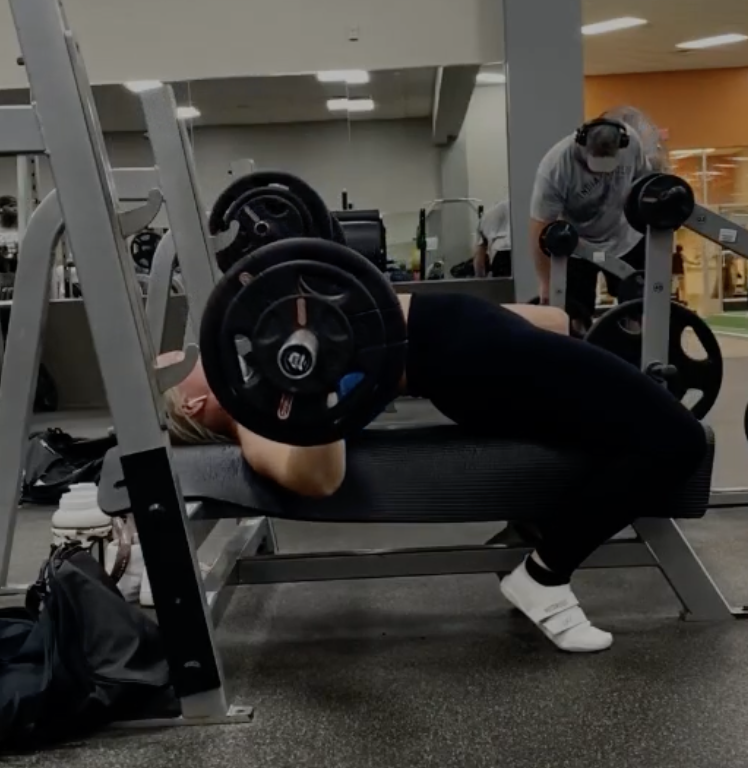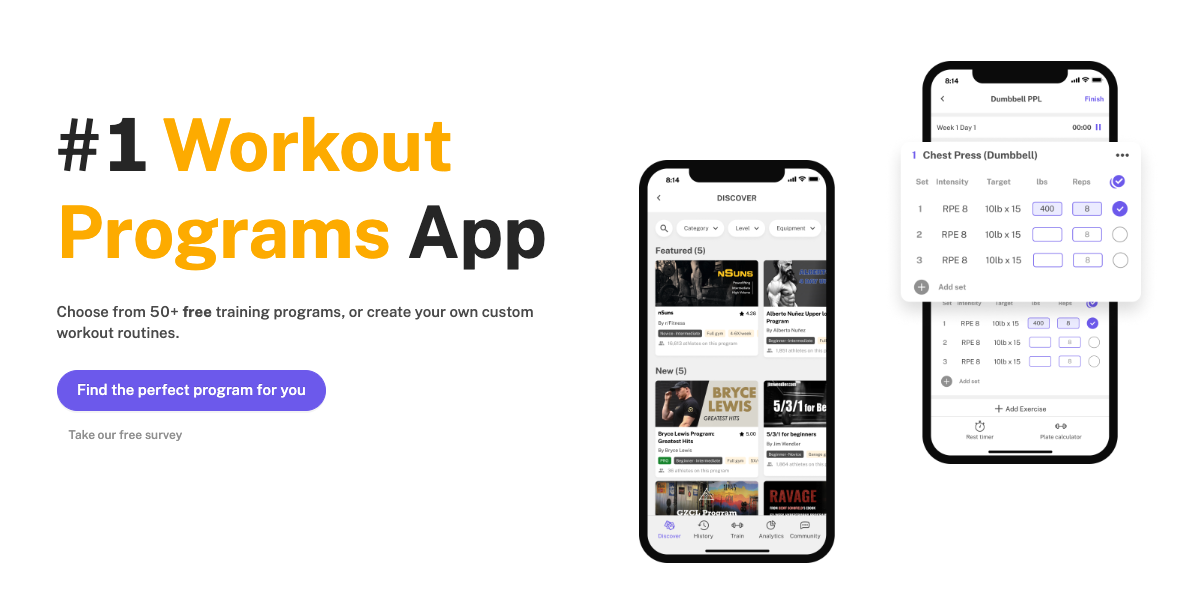Science-Based Lifting vs. Bro Science
Written by The Boostcamp Editors
What is the right way to go about it?
In the world of fitness, whether your goals are bodybuilding or powerlifting, there's a constant battle between two distinct schools of thought: science-based lifting and "bro science." While science-based lifting is grounded in research, empirical data, and a structured approach, bro science relies heavily on anecdotal evidence, gym lore, and the personal experiences of self-proclaimed fitness gurus. Understanding the differences between these two approaches can help you make informed decisions about your fitness regimen and ultimately achieve better results.
What is Science-Based Lifting?

Science-based lifting, as the name suggests, relies on scientific principles and research to guide training practices. This approach focuses on understanding the body's physiology, biomechanics, and the principles of strength training and nutrition.
Key Principles of Science-Based Lifting
Progressive Overload: This principle involves gradually increasing the weight, frequency, or number of repetitions in your training routine to continuously challenge your muscles, promoting growth and strength gains. For example, if you can perform 10 repetitions of a squat at 100 pounds, increasing the weight to 105 pounds over time helps to continuously stimulate muscle growth.
Periodization: Periodization involves structuring training into cycles, with each phase targeting different aspects of fitness, such as strength, hypertrophy, and endurance. This method helps prevent plateaus and reduces the risk of overtraining and injury. A common model is the linear periodization, where the intensity of training increases while the volume decreases over several weeks.
Individualization: Science-based lifting recognizes that each person is unique. Training programs should be tailored to an individual's goals, fitness level, and physical capabilities. For instance, a beginner might start with a focus on building foundational strength with compound movements, while an advanced lifter may have a more specialized routine.
Evidence-Based Nutrition: Nutrition plays a crucial role in fitness. Science-based lifting emphasizes the importance of macronutrient balance, timing, and overall diet quality, guided by research on how different nutrients affect muscle growth and recovery. Studies show that consuming a balanced meal with protein and carbohydrates after a workout can significantly enhance muscle protein synthesis.
What is Bro Science?
Bro science, on the other hand, is a term often used to describe fitness advice based on anecdotal evidence and gym myths rather than scientific research. While some bro science tips may work for certain individuals, they lack the rigor and consistency of science-based methods.
Common Traits of Bro Science
One-Size-Fits-All Approach: Bro science often promotes generic advice that doesn't take individual differences into account. For example, it might advocate for a specific workout routine or diet plan as universally effective, such as "Do 100 push-ups every day for big arms," ignoring individual variability in response to exercise.
Mythical Techniques: Many bro science tips are based on misconceptions or outdated beliefs, such as the idea that you must "confuse" your muscles to make them grow or that certain exercises are superior without supporting evidence. The muscle confusion myth, for instance, lacks scientific backing and can lead to inconsistent training.
Supplements Over Food: Bro science tends to emphasize supplements as the primary driver of muscle growth, often promoting expensive products with little proven benefit. While some supplements can be beneficial, such as creatine or protein powder, they should not replace a well-rounded diet.
No Scientific Basis: Bro science advice rarely cites credible sources or scientific studies. It relies on the credibility of the individual giving the advice rather than on verifiable facts. Claims like "You need to eat every two hours to boost metabolism" often lack scientific validation.
Comparing the Science Based Lifting and Bro Science
Training Programs
Science-Based Lifting: Training programs are structured, with clear goals and phases. Exercises are selected based on their effectiveness, and progression is planned and monitored. For example, a science-based program might include compound movements like squats and deadlifts due to their proven efficiency in building strength and muscle.
Bro Science: Programs are often based on what has worked for the person giving the advice, regardless of whether it's applicable to others. You might hear recommendations like "Just do biceps curls every day to get huge arms," without consideration of balanced muscle development or recovery needs.
Nutrition
Science-Based Lifting: Nutrition plans are tailored to the individual's needs, with a focus on whole foods, appropriate macronutrient distribution, and meal timing. Research supports strategies like consuming protein post-workout to aid in muscle recovery and growth.
Bro Science: Diet advice often includes blanket statements like "Eat big to get big," without specifying the importance of nutrient quality or balance. There is also a heavy reliance on supplements, sometimes with little regard for their necessity or efficacy.
Recovery
Science-Based Lifting: Emphasizes the importance of rest and recovery, recognizing that muscles grow during periods of rest. Adequate sleep, proper nutrition, and active recovery techniques are highlighted. For example, incorporating rest days and light activities such as walking or yoga can enhance recovery and performance.
Bro Science: May promote the idea of "no pain, no gain," encouraging people to push through fatigue and soreness without adequate rest. This can lead to overtraining and injury. Ignoring the need for recovery can result in prolonged muscle soreness, decreased performance, and increased risk of injuries like tendinitis.
The Dangers of Bro Science
Following bro science can lead to several negative outcomes, including:
Injury: Without a proper understanding of biomechanics and progressive overload, you may be more prone to injuries. For example, improper form during heavy lifts can cause significant strain on joints and muscles.
Plateaus: Generic programs and mythical techniques can lead to training plateaus, where progress stalls. Without proper periodization and progression, muscles can adapt to the same routine, halting growth.
Wasted Resources: Spending money on unnecessary supplements or following ineffective diets can be a waste of time and resources. Supplements like BCAAs, often promoted in bro science, have limited benefits when protein intake is adequate from whole foods.
Frustration and Burnout: Unrealistic expectations and improper training can lead to frustration and burnout, making it harder to stay motivated. The lack of measurable progress and constant exhaustion can discourage long-term adherence to fitness goals.
Embracing Science-Based Lifting

To get the most out of your fitness journey, it’s essential to embrace science-based lifting principles. Here are a few steps to get started:
Educate Yourself: Read books, articles, and research studies from reputable sources. Understanding the science behind training can empower you to make informed decisions. Websites like PubMed and journals like the Journal of Strength and Conditioning Research are excellent resources.
Consult Professionals: Seek advice from certified fitness trainers, dietitians, and medical professionals who base their recommendations on scientific evidence. They can provide personalized guidance and help design a program that suits your needs.
Track Your Progress: Keep a detailed record of your workouts, nutrition, and progress. This data can help you make adjustments and continue progressing. Apps like MyFitnessPal or training journals can be valuable tools for tracking.
Stay Skeptical: Question advice that lacks evidence or seems too good to be true. Look for credible sources and research to back up any claims. Remember, if something sounds like a magic solution, it probably isn't.
Where to Find Science Based Lifting Programs
When it comes to finding solid workout programs, consider using the Boostcamp App. The Boostcamp app offers free science-based workout routines, advanced custom program builder, and a workout tracker to help you stay on top of your progress.
By using the Boostcamp App for your training routine, you'll have all the tools you need to develop a strong mind-muscle connection and break through plateaus. Download the Boostcamp App today and take your workouts to the next level!
Conclusion
While bro science can sometimes offer entertaining or even occasionally useful tips, relying on it as your primary source of fitness advice is risky. Science-based lifting provides a structured, evidence-backed approach that can lead to better, more sustainable results. By understanding the principles of science-based lifting and applying them to your training and nutrition, you can optimize your fitness journey and achieve your goals more effectively and safely. Embrace the science, and let evidence guide your path to fitness success.
Also, be sure to follow Boostcamp on Instagram and subscribe on YouTube!


